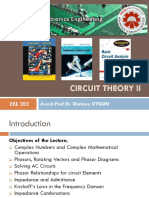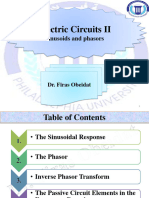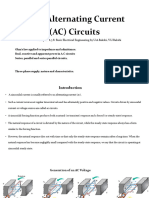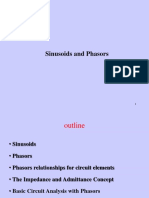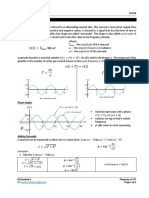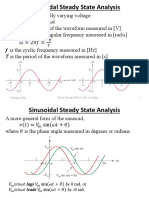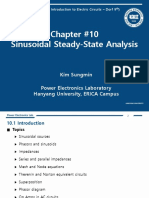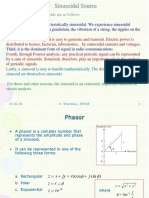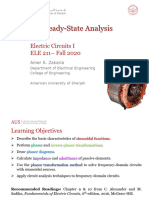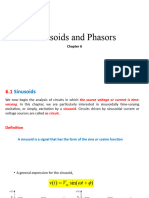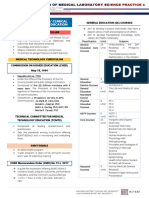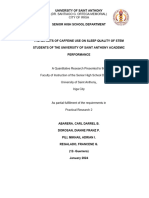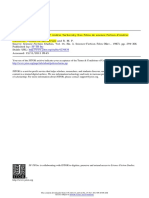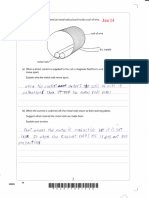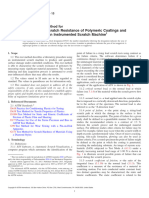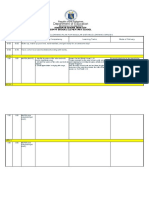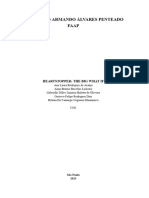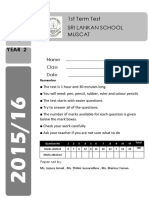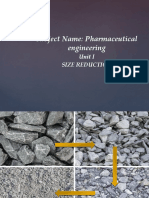0% found this document useful (0 votes)
62 views6 pagesChapter 10 Lecture Notes
This document discusses sinusoidal steady-state analysis including phasors and sinusoids. It defines key concepts such as period, frequency, angular frequency, phase angle, and how phasors are used to represent sinusoids. It also covers impedance, series and parallel impedance, phasor diagrams, and sample circuit problems involving phasors.
Uploaded by
Joshua SambalodCopyright
© © All Rights Reserved
We take content rights seriously. If you suspect this is your content, claim it here.
Available Formats
Download as DOCX, PDF, TXT or read online on Scribd
0% found this document useful (0 votes)
62 views6 pagesChapter 10 Lecture Notes
This document discusses sinusoidal steady-state analysis including phasors and sinusoids. It defines key concepts such as period, frequency, angular frequency, phase angle, and how phasors are used to represent sinusoids. It also covers impedance, series and parallel impedance, phasor diagrams, and sample circuit problems involving phasors.
Uploaded by
Joshua SambalodCopyright
© © All Rights Reserved
We take content rights seriously. If you suspect this is your content, claim it here.
Available Formats
Download as DOCX, PDF, TXT or read online on Scribd
/ 6

